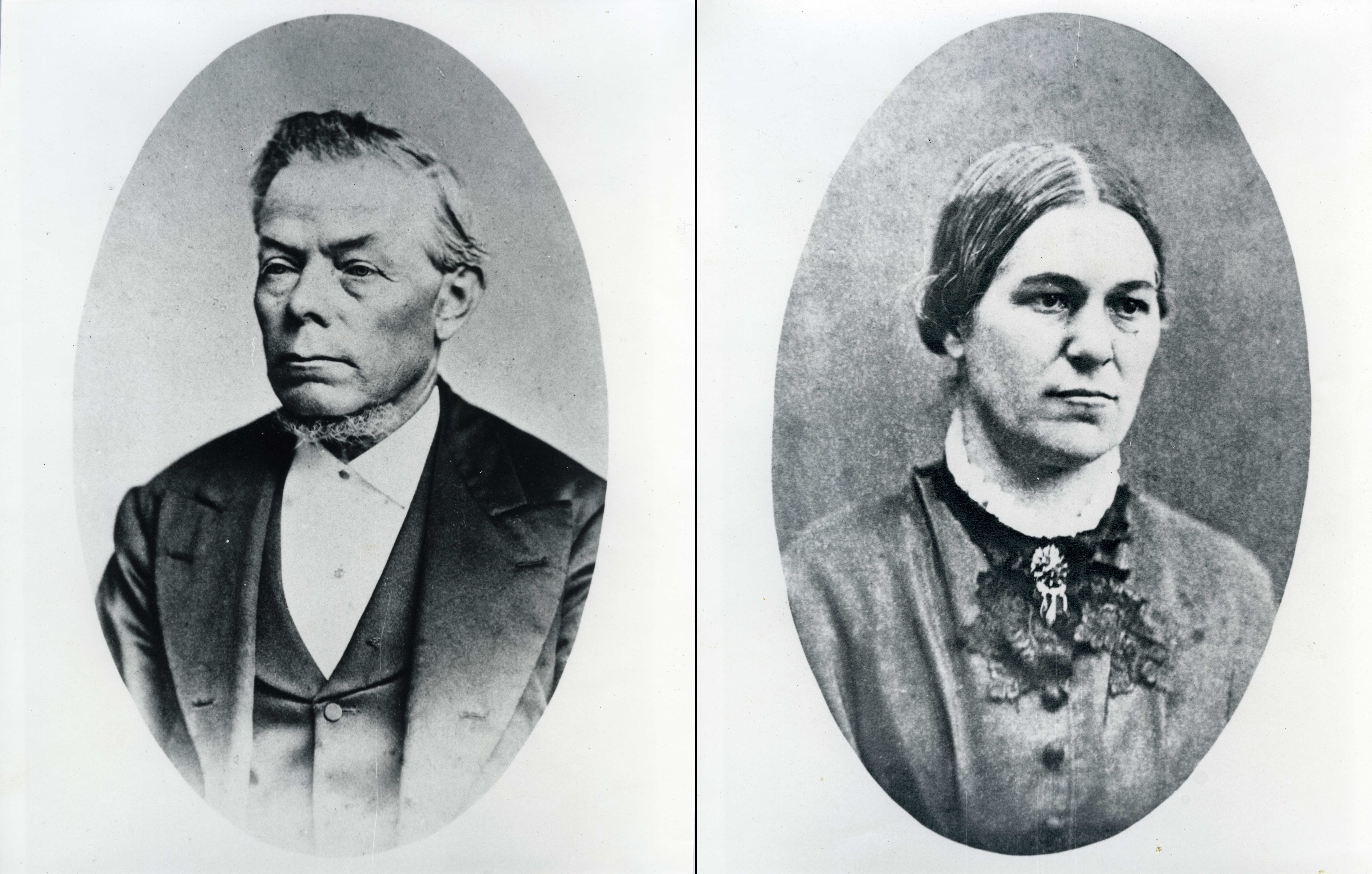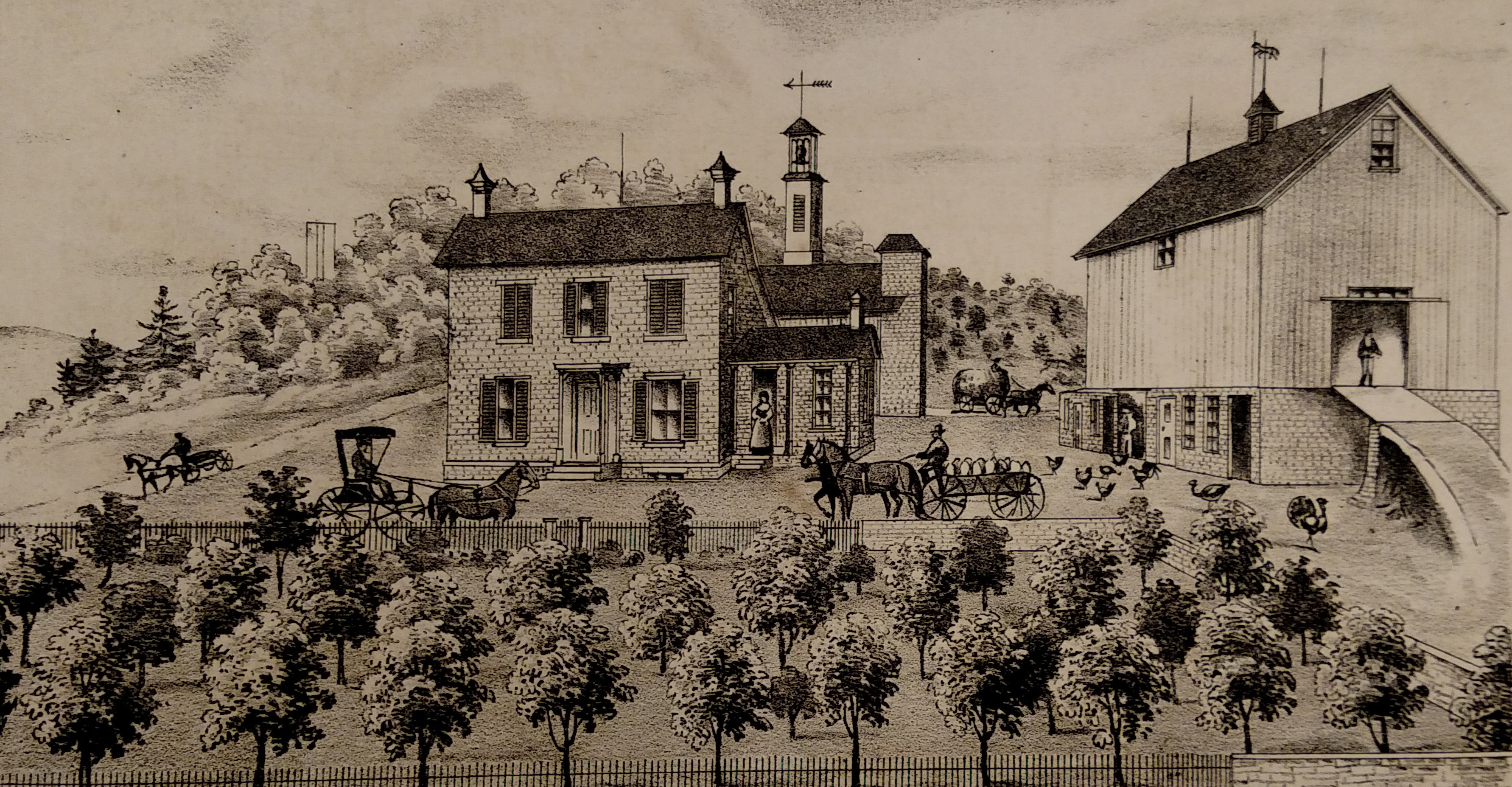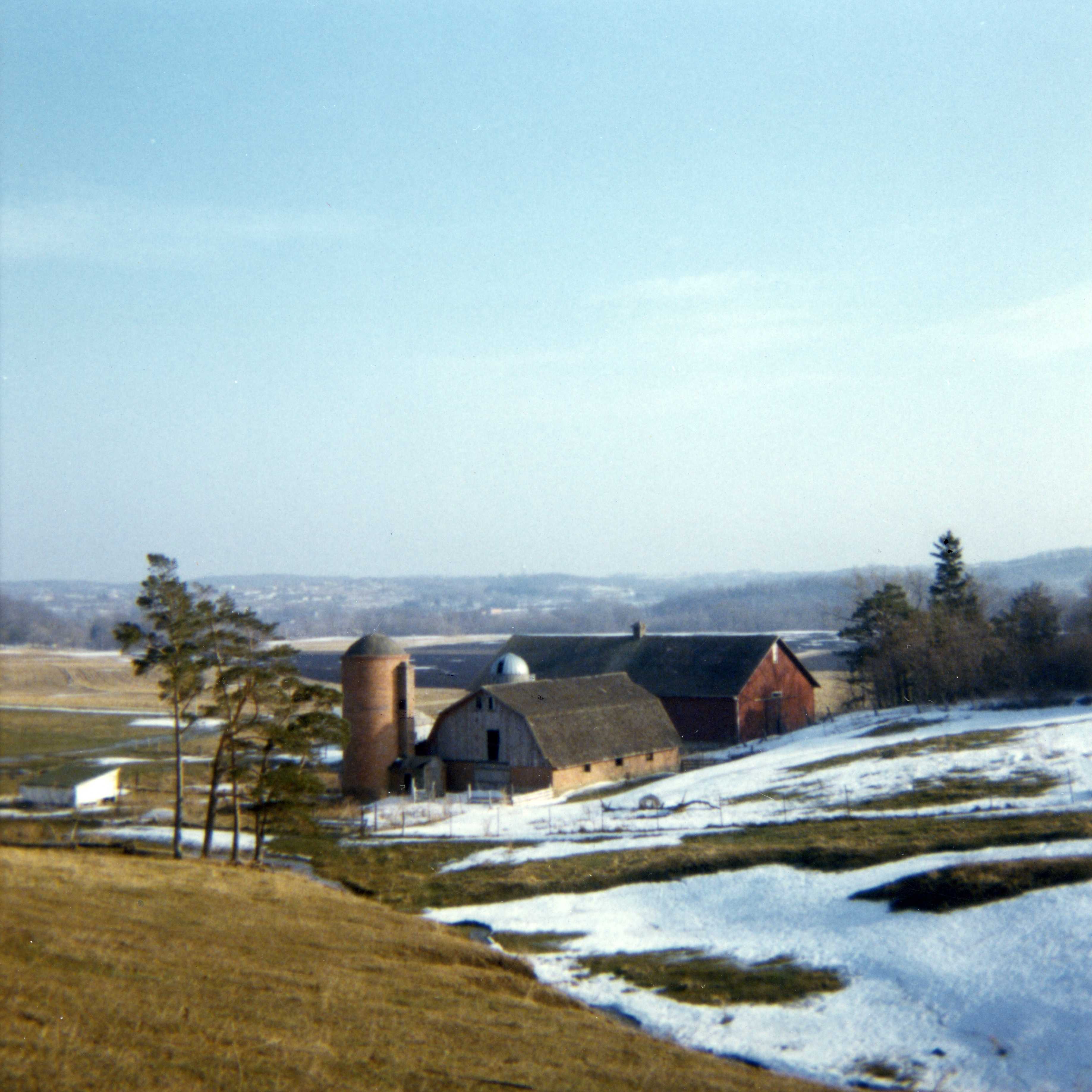
A Classic Pioneer Farmstead in Rochester
Listed on the National Register of Historic Places in 1975, the George Stoppel Farmstead is a unique structure which preserves a slice of life in the late 19th and early 20th centuries. Composed of the main house, barn, smokehouse and many hand-dug caves, the site tells a unique story about early American immigration, settlement, and the changing landscape of Olmsted County.
But who were the Stoppels? Click here to discover the Stoppel Trail.
The Path to America
On November 11, 1813, in the Kingdom of Württemberg (now the state of Baden-Württemberg in southwestern Germany) Johann George Stoppel and his wife, Magdalena Agatha Spaeth, welcomed the birth of their third son, George Stoppel. George's older brother, Franz Joseph, had been born just two years before on July 14, 1811.
In 1835, George made his way to France. Having apprenticed in the cooper trade at the age of 17, he made his living making wooden barrels for wine and dried foods for another 13 years. Though he was raised as a Catholic, during his time in France he began to think along independent religious lines and found he could no longer accept the doctrines of the Catholic faith. He carried this independent mindset with him the rest of his life. Joseph A. Leonard’s 1910 History of Olmsted County, Minnesota remarks that he “had a mind of his own, and used it.”
George’s time in France corresponded almost exactly with the period known as the July Monarchy (1830-1848) when the country was a liberal constitutional monarchy under Louis Philippe I. Louis Philippe was reform-minded and sought religious equality among Catholics and Protestants. It was during this time that laws enforcing Catholicism were repealed. Economically, this was an opportune time for George to be in France as the country experienced economic growth and the beginnings of industrialization. By the late 1840s, however, things took a turn for the worse. Many of Louis Philippe’s reforms worked to the benefit of the wealthy rather than the French populace as a whole. Poor harvests in the years leading up to 1848 resulted in food shortages. A fall in purchasing power led to industrial overproduction and extensive unemployment, which led to a banking crisis. Demonstrations ensued, culminating in the Revolution of 1848, also known as the February Revolution, and the establishment of the Second Republic in France.
Though not recorded anywhere, these fraught circumstances likely influenced George’s next move. In 1846, George's older brother Franz Joseph made the journey to the United States, and in the midst of revolutionary fervor in France and the rest of Europe, George followed in his older brother’s footsteps. George Stoppel left for the U.S. via the port city of Le Havre on August 30, 1848. We know he became an independent thinker, but whether or not he participated in or supported the revolutions is unknown. What we do know is he left Europe at the same time as many who did, and this group became known as the Forty-Eighters. Many Germans who came as Forty-Eighters settled in Texas, Cincinnati, and Milwaukee.
Joseph A. Leonard’s 1910 History of Olmsted County, Minnesota tells us after spending 41 days crossing the Atlantic Ocean on a sailing vessel, George landed at Castle Garden, New York. From this point, George went to Rochester, New York, and spent a year working on a farm.
The Road to Rochester, Minnesota
After saving some money while doing farm work in New York, George joined his brother in Cincinnati, Ohio, where he went back to the cooper trade. Here he met Maria A. Faber, who had come from Germany with her parents in 1847. They married on December 24, 1851. They stayed in Cincinnati for the next five years and started their family. Louis was born around 1851, followed by George Jr. in 1853, and Louisa in 1856.
As a hub for German immigrants, Cincinnati was a good fit for the Stoppel brothers and their growing families. They had not, however, left the unrest of Europe completely behind them. In 1853, a visit to the city by Archbishop Gaetano Bedini led to a riot involving around 600 German men and women protesting the visit due to his repression of revolutionaries in the Papal States in 1849. Moreover, the influx of immigrants in the mid-1800s resulted in a surge of nativism, a political stance that promotes the interests of native inhabitants against the interests of immigrants. This gave rise to the short-lived Know Nothings (1844-1860), who opposed slavery and supported greater rights for women, but also were anti-Catholic, anti-Irish, anti-immigration, and xenophobic. In the elections of April 1855, another riot in Cincinnati broke out as nativists associated with the Know Nothing party attacked a German-American neighborhood. The Know Nothing mayoral candidate lost the election and the rioting marked the end of the Know Nothing party in Cincinnati.
In 1856, the two Stoppel families uprooted themselves and headed west. One story tells that a German minister’s description of the Minnesota Territory as “all good land where the wind don’t blow” influenced their decision. According to this story, they arrived in Winona by steamboat in the spring of 1856, and from there took a wagon to Rochester. George then filed a claim for 160 acres of land on April 28, 1856. Another story tells that the families traveled from Cincinnati by oxcart, sharing one wagon between them, in August of 1856 (whether that is when they left Cincinnati or arrived in Rochester is unclear). At this point, Joseph and Maria had four children and George and Maria had three children. All but the women and youngest children walked. In either case, after their long journey each brother pre-empted a quarter section of adjoining land in Rochester Township, about three miles southwest of Rochester. To file their claims the brothers had to walk to the nearest land office, which was in La Crosse, Wisconsin. After three days and 70 miles, they reached their destination and paid $200 for 160 acres, or $1.25 per acre. Though George filed the land claim in 1856, the formal document describing the land signed by President James Buchanan is dated June 10, 1858.
Building a New Life
The government required homesteaders to build a house on their land, but with winter approaching, the Stoppels decided to dig a cave into the hillside. It was here that Joseph and Maria’s fifth child, Charles, was born on March 16, 1857. That summer, George and Joseph each built a log cabin. Guided by Joseph’s experience with masonry, they quarried limestone from the nearby hills to build stone houses over the next few years, completing them in the early 1860s. Joseph built a lime kiln, the first in Olmsted County, near his house. The lime he produced there was used in several of Rochester’s earliest commercial buildings. Meanwhile, George added numerous buildings to his growing farming operations. A Record and Union article from December 1876 wrote about his “Fine Farm Buildings”, saying:
His barn, erected some three years since, is one of the best and largest in the county. It is 50x70 feet in size, and has a capacity for 150 tons of hay and over 5,000 bushels of grain. It contains underground stables for horses and cattle, with a pump in each, a room for cleaning grain, tool shed, chicken house, etc.
One of the most novel arrangements about the place is the wine cellar. It consists of a sort of cave extending under the bluff near the house, resembling the Hoosic Tunnel in shape. [The Hoosac Tunnel is a railroad tunnel in Massachusetts. When completed in 1875, it was the second longest tunnel in the world.] …It is used for storing wine, potatoes, etc. In connection with the cellar is a building used for a woodshed, corn-house, work-shop and smokehouse, the whole very conveniently arranged.
Both Stoppel families continued to grow in Minnesota, as well. George and Maria added another boy to their family with the birth of Frederick in 1864. Joseph and Maria had another four children: William, born 1859, Frank, born 1861, Mary, born 1862, and Emil, born 1866. Sadly, diphtheria found its way to the families in 1867, taking the lives of George and Maria’s children, Louis and Louisa, and Joseph and Maria’s children, Mary and Emil.
Both men lived long, productive lives in Olmsted County. George died November 29, 1897, just past his 84th birthday. His wife, Maria, died February 2, 1901. Joseph died June 26, 1898, just shy of his 87th birthday. His wife, Maria, died January 7, 1910.
Today, the History Center of Olmsted County is working to restore the Stoppel Farmstead and to preserve this story for future generations.
Click here to discover the Stoppel Trail and learn more about the Stoppel family and their journey to Rochester.

Stoppel Farmstead Interpretive Plan

The Stoppel Farmstead, 2021

George and Maria Stoppel

George Stoppel farmstead, 1874

George Stoppel farmstead, looking southeast, 1966

Stoppel Farmstead restoration began September 2022